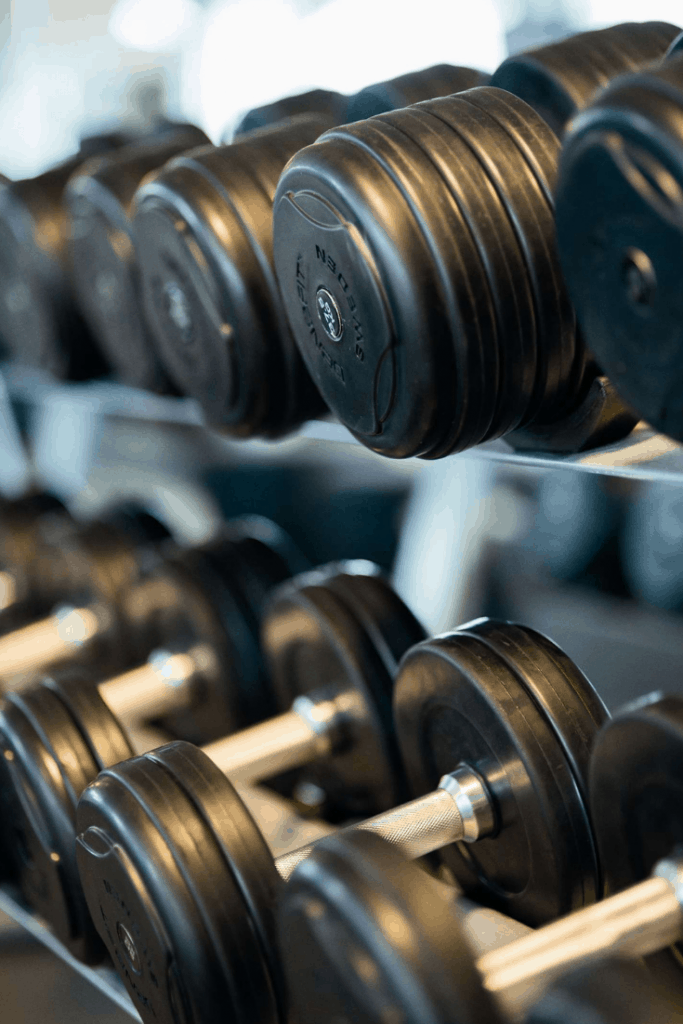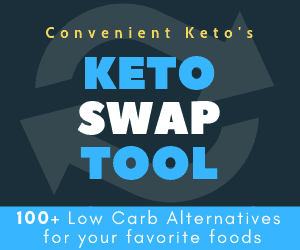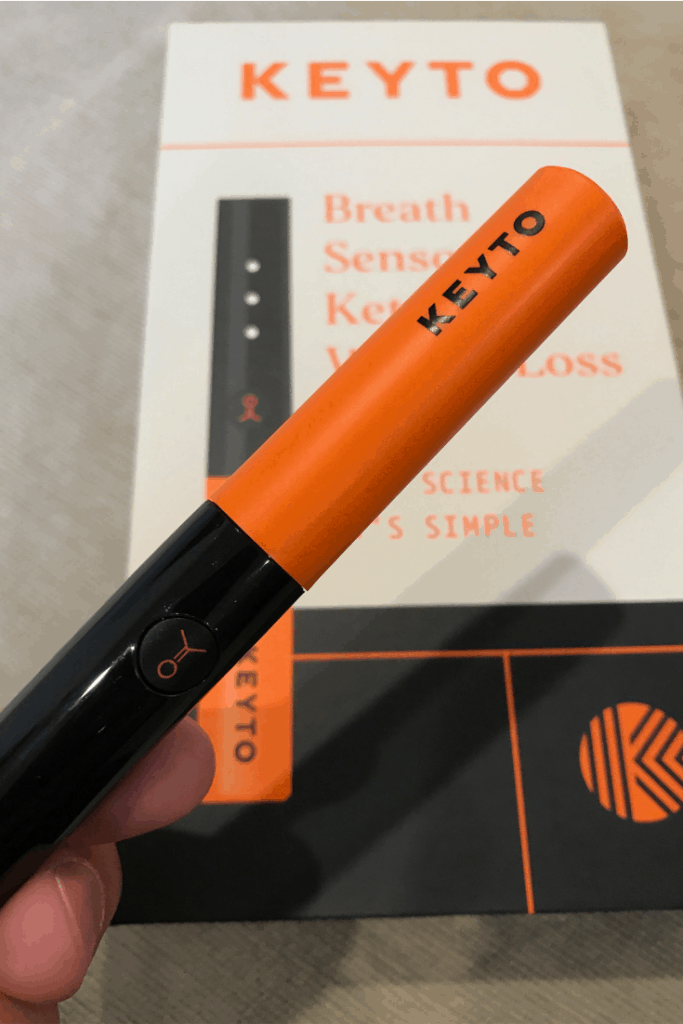The keto diet is extremely popular, likely due to the fact that the diet is truly effective for fat loss, increased mental clarity and reversing metabolic diseases like Type 2 Diabetes.
In this article, we show you how to get into ketosis in 24 hours and how to apply those principles to achieve successful, long-term results.
Because of the keto diet’s popularity, there are tons of terms and concepts floating around that can be quite overwhelming and downright confusing. For instance, what is ketosis and how long does it take to enter ketosis?
(And, why am I entering it, again?)

Truth be told, metabolism and physiology are very complex biological processes. The mechanisms by which all our parts work in concert are not fully understood and can vary from person to person.
So, we’ll start with a statement: Question everything you read and hear (including within this article) and listen to feedback from your own body.
Per standard disclaimers, we are not medical doctors giving you dietary advice. But, even doctors and scientists are contradicted by new research all the time. It’s tough to know what and whom to listen to.
For us, the keto diet (and any lifestyle change) works best when keeping it as simple as possible including doing what works for you.
To that end, this article aims to break down the mystery and misinformation and distill the most important aspects of understanding what you need to know about the keto diet.
What is the Keto Diet at a high level?
The keto diet is short for the ketogenic diet. The diet involves eating primarily ketogenic foods, meaning foods that promote the conversion of fat into fuel (aka burning fat– exactly what we want!).
That fuel consists of ketones, which your brain and muscles can run on directly. When your body is generating ketones at a high enough rate, you are in a physiological state known as ketosis.
So, just how do we get into this magical state of ketosis?
How to get into Ketosis (in 24 hours?)
Let’s now talk about how to get in ketosis.
How do you know you are in ketosis? Technically, if you build up a certain amount of ketones in your body, you’re in nutritional ketosis. It’s simple enough to measure the concentration of ketones in your body, but interpreting the results may not be as straightforward.

Your Stored Fat vs. The Fat You Eat
You can measure the number of ketones you are generating without much fuss. However, the ketones you measure aren’t necessarily all generated from your stored body fat. Instead, they can also be from the fat that you ingested from a meal that’s now floating around in your bloodstream.
Furthermore, you can even consume exogenous ketones, meaning directly ingesting ketones from outside the body. That would artificially inflate your ketone readings and doesn’t reflect how much actual body fat you are burning.
A high ketone concentration doesn’t necessarily mean you are burning your stored body fat. And that’s really the goal of the keto diet for most people. You don’t necessarily have to have a high concentration of ketones all the time (unless you are using keto to prevent epileptic seizures).
Practically speaking, if you’re ingesting tons of fat and not losing weight but are measuring high amounts of ketones in your blood, it could be that you are generating ketones from what you are eating rather than your own body fat.
Why ketones?
Brain. Your brain can utilize ketones for energy. In fact, ketones are what keep your brain functioning when you are fasting. So, as long as your body is producing ketones, you can fast without feeling drained, or the dreaded “brain fog”.
Braun. Your muscles can also run on ketones and since you have essentially an unlimited amount of fat stores, they can run indefinitely (such as during a marathon). Glycogen, on the other hand, has limited storage within the body. Using your body’s ketones also prevents your muscles from breaking down unnecessarily, meaning you aren’t prone to losing lean muscle mass during fasting.
These are just a couple of the benefits of ketones. Suffice it to say, ketones are awesome.
How do you burn stored body fat to generate ketones?
When we talk about using our stored body fat, what we are looking for is endogenous ketosis. That means ketones generated from within the body, converted from stored fat. We want to know how to reach ketosis endogenously.
The main scenario in which your body naturally enters endogenous ketosis is when you drastically restrict your carb intake.
In this scenario, your body has fewer options to fuel itself. The low levels of glucose triggers one of those options, which is to use our stored fat to generate ketones for energy. That means you use and lose body fat.
The Glycogen Factor (the enemy of Keto)
You can think of glycogen as stored glucose. Your body has its own store of glucose via glycogen, but it is limited in its storage capacity. In the liver, you can store about 100g of glycogen, which equates to only about 400 calories worth or energy. The muscles can hold around 400g of glycogen, but that can only be used within the muscle itself.
That scenario we mentioned where your body is forced to generate ketones from fat occurs when these glycogen stores are depleted and there’s a lack of free glucose in your system. By keeping these glycogen stores low, especially within the liver, you are more likely to burn fat.
You can keep glycogen stores low by restricting how many carbohydrates you eat, as mentioned above, but also by expending energy (i.e., exercise of moderate to high intensity). And, there’s no reason you can’t exercise and restrict carbs harmoniously.

How long does it take to go into ketosis?
You might be asking “How long does it take to reach ketosis?” Can we do it in a month, a week… or even a day?
What’s the absolute quickest way to get into ketosis? That would be to take exogenous ketone supplements and raise your blood ketone levels. HOWEVER that will not do much for burning your body fat.
Here’s how to get into ketosis in 24 hours:
The ultimate goal for keto dieters looking to lose stored body fat is to burn your own stored fat for fuel. There are many ways to achieve that goal, but here’s an extreme way how to get into ketosis quickly.
Disclaimer: Consult with a health care professional before making any dietary changes related to how to get into ketosis in 24 hours.
- Fast for the majority of 24 hours
- Do not consume anything with calories (water, tea and plain coffee are fine)
- This is an attempt to utilize and lower your stored liver glycogen levels, which naturally occurs during fasting and can fully deplete within about 24 hours.
- A few hours before the end of the 24 hours, perform a 90-minute, moderate to a high-intensity workout.
- This is another attempt to deplete your liver glycogen, but also to use some of your muscular glycogen. In the absence of ingested carbohydrates, liver glycogen levels lower 40-60% after 90 minutes of exercise at an average 70% exertion level.
- Be sure to include some full-body, high-intensity interval training (HIIT) during this time frame. Workouts of high intensities promote anaerobic breakdown of glycogen.
- Measure your ketone levels either via blood test, urine strips or breath analyzer to confirm you are in endogenous ketosis. A measure of 0.5 mmol/L or more reflects nutritional ketosis.
- Note: Since you have fasted for 24 hours straight, these ketones are going to mainly be ketones generated from stored body fat (endogenous ketosis, YAY!).
Here’s a real-world application of the above method, which also works as a metabolic reset for ketosis.
- Finish eating dinner at night. Start the 24-hour timer.
- Sleep.
- Wake up and fast throughout the day.
- After work (if that applies), perform a 90-minute workout with at least some HIIT.
- At the end of these 24 hours, you are utilizing stored fat for ketone production and your liver glycogen levels should be near depletion.
- After you have tested your ketone levels to confirm, resume your normal ketogenic diet of eating low carb, keto-friendly foods, until satiated.
It’s just an example
The above method is a way to prove to yourself exactly how to get into ketosis fast.
To be clear, we are not advocating that you perform the above method with any regularity (or even at all). However, it is a surefire way to deplete your liver glycogen and give you a great chance of getting into ketosis. If you really don’t believe you have the ability to enter ketosis quickly, it will definitely prove that you actually can.
You are able to see firsthand that fat loss via the keto diet is a natural process. And, by fasting, you know that the ketones are being generated from your stored fat. You now know it’s actually possible and exactly how to put your body into ketosis. In fact, you now know how to get into ketosis in one day!
Note that we also used fasting to ensure your glycogen stores would deplete and to make sure we were measuring endogenous ketosis. But, in everyday life, carb restriction doesn’t mean calorie restriction.
So what are some realistic principles can we glean from our 24 hour example above that we can use in a more practical keto lifestyle?
Keto as a Lifestyle
You’ve answered the question of how to go into ketosis. Now, let’s talk about how to enter ketosis and maintain it long-term. In other words, how do you get into ketosis without all the pain and sacrifice supposedly associated with dieting and fasting all the time?
The keto diet of course specifies low carb, but you are able to consume a moderate level of protein and up to a high level of fat, as needed. So, in theory, you could perform that exact “extreme 24-hour scenario” while eating until full, just so long as your carb intake was low. When eating very low levels of carbs (20g net carbs or less), the glycogen stores in your liver will be near or at depletion, setting your body up to prioritize fat burning.
And that doesn’t mean depriving yourself of good food either.
Foods that are high fat and moderate in protein and low carb can be delicious. Trust us, this is the world we’ve happily lived in for years.
Our own experience on a long-term keto diet.
We’ve been on the keto diet since October 2016. Trust us– if we thought we would have to do the 24 hour fast all the time, we’d have quit on Day 2.
The key is taste, variety, and convenience!
First is taste. We don’t focus on what we can’t eat but rather what we can eat. And it’s really delicious stuff. We’ve replaced all of our high carb favorites with delicious low carb alternatives. Think positive reinforcement versus negative.
In fact, we could argue that we love these lower carb, higher fat foods even more than the foods we used to eat on the traditional Western diet.
Want proof? Check out our Instagram — we love we eat so much that we take pictures of almost every meal.
Convenience
For many, you may have to start cooking every single meal. And honestly, that’s a really tough barrier to entry when it comes to living a keto lifestyle. That’s especially true if you’re not used to preparing meals and cooking.
Luckily, the prepared foods market for keto and low carb diets has grown exponentially recently. It’s a great time to be on a low carb diet. You’re not stuck with shakes and protein bars. People are selling pre-made cupcakes, cookies, tortillas, bread, pizza–you name it– that are keto-friendly. No more excuses!
There’s not much we haven’t found an alternative for. And honestly, if there’s not an alternative, just eat some of the real stuff in moderation once in a while. Remember what we said– it doesn’t set you back much at all you eat higher carb on occasion

Speaking of alternatives to food and making keto convenient, we have found a low carb alternative for almost every single category of food. We created a tool that gives you 100+ low carb swaps for your favorite foods.
Link: Keto Swap Tool
It’s okay, you can enjoy the foods you eat on a diet and still lose fat. No one says you have to suffer. It can be our little secret!
Keto Flu? Probably Sugar Withdrawals
Everyone talks about the keto flu, a set of physiological issues you deal with on the way to becoming “keto adapted.” We haven’t found conclusive scientific literature regarding the increased concentration of ketones directly causing any keto flu symptoms.
Instead, our theory is that keto flu symptoms truly lie in sugar withdrawals. Your low carb foods don’t have much sugar, so you are essentially weaning yourself off a drug when you start keto. Yikes.
If you instead start by substituting sugars for keto-friendly sweeteners, it may be easier to transition fully into low carb. Having detoxed from sugar prior to going keto (even for a bit) will make your transition to eating low carb much easier.
Note: The same goes for alcohol. Some people go straight into keto/low carb and try to give up sugar, alcohol AND carbs at the same time. That’s a recipe for becoming overwhelmed, stressed, and ultimately failing. Try working on one thing at a time. You should see results simply from restricting sugar and alcohol intake.
If you don’t have time to detox, then just get focus on eating higher fat foods to get your palate more used to fat. Do that while slightly lowering your carbohydrate intake to a comfortable level. Basically, use really delicious higher fat foods to quell carbohydrate cravings.
Bonus: How to tell if you are in keto
Use a breath acetone meter. Breath acetone has been shown to be strongly correlated to blood ketone levels, so we can count on it to be a reliable indicator of the level of ketone generation in the body.
This is SO MUCH MORE convenient than utilizing urine strips and taking blood tests. We use the KeyTo Breath Sensor and have had a wonderful experience with their simple smartphone app. The results appear to be accurate based on the expected outcome from what and when we eat and you can track the history in the mobile app.
If you’re interested, you can find the KeyTo Breath Sensor here and use our promo code CONVENIENTKETO10 for 10% off your order.
Tips
Fasting can help, but it’s not something you have to do every day. Doing so after a day of higher carb intake will help get you back on track. Also, planning intermittent fasting a couple days a week can help keep glycogen levels low and ketone production high.
Exercise and fasting together are the holy grail of fat burning for endogenous ketosis. In the absence of sugars/glucose surrounding workout time, your body will happily burn through fat to generate ketones.
Your body will actually burn (oxidize) fat during exercise. The presence of carbs inhibits this process, so that’s why you want to endeavor to avoid consumption of carbs immediately before and after a workout.
If you are having trouble with the HIIT workout, supplement with some sort of fat, but not carbohydrates. A great source of fat for the ketogenic diets is MCT oil, which has a thermogenic effect on the body. That means your body uses more energy to process MCT. Even more, MCTs have been shown to suppress body fat accumulation. Lastly, MCTs are more likely to be burned by your body than stored as fat.
For some perspective, your liver can hold about 400 calories worth of energy and an average person burns about 400 calories walking for an hour.
Furthermore, if you are remotely active, your energy requirements will increase and you will naturally burn more carbs and glycogen during the course of day, meaning you can eat more carbs and still deplete your glycogen stores.
Watch your protein intake. Excess protein is known to spike blood insulin levels, which directly inhibits ketone production. Moderate protein intake is suggested on keto, but everyone’s body has a different need for protein and therefore “moderate” is relative. Use ketone monitoring tools to discover what your body can tolerate.
Don’t stress about protein intake initially. Protein is one of the last things we recommend tweaking on the keto diet.
Cheating?
Carb loading or binging should not inherently affect your ability to re-enter ketosis.
The timing of how long to get into ketosis after a carb heavy meal depends on how much you have ingested. But once you either use those carbs for energy or store them in your body as fat, once they have been processed, your body will look for energy from glycogen in a fasted state. And the “damage” of your carb-heavy meal is limited by the fact that the liver can only store about 100g of glycogen (approximately 400 calories of energy), which should generally be depleted within 24 hours in a fasting state.
In other words, your high-carb cheat meal is not going to destroy all your efforts. It’s easy to get right back into it.
Practical ways to get back on track
- If you don’t work out a lot, fast to deplete your glycogen stores the day after a cheat day.
- Work out a lot? Just skip breakfast the day after a cheat day and then work out after work, prior to eating dinner.
- If you eat low carb AND work out regularly, keep it up! Fasting is really only a bonus. An easy, practical fast in this situation would be to stop eating by 8 PM and start eating again at 8 AM (12 hours).
Parting Thoughts
In this article, we don’t bring up weight loss, and that’s on purpose. Instead, we like to reference fat loss. That’s because weight loss can depend on many factors, such as water retention, when you’ve last eaten, muscle mass, etc. The problem with using weight as a measurement is that the keto diet, unlike many diets, does not result in very much muscle loss. In fact, it is normal to maintain or even gain muscle mass with resistance training during keto.
Therefore, try to measure your body fat % for progress or even just use a mirror. You should see a loss of fat and retention of muscle as a visual indicator of progress. We don’t use scales and simply use the mirror as well as how we feel on a day-to-day basis as gauges of our health.
Lastly, don’t take it all too seriously. You probably know a ton of people, or at least have seen a bunch, who have had amazing results on keto. Just trust that when you get to a point where you can comfortably eat low carb and enjoy fatty foods, you will lose fat. Don’t worry too much about how many days to get into ketosis or how to get into ketosis in 24 hours, but rather, how do you get into ketosis for the long run?
There a lot of things you can continually tweak on keto. Like we said previously, there’s no need to try to focus on everything at once. You’re always working on bettering yourself and that includes your diet and overall lifestyle. We have been going strong on this ketogenic lifestyle for several years and we learn new things every day.
It’s a fulfilling and rewarding journey to be on– and that journey will undoubtedly last more than 24 hours.
Thanh Vo, MSc
Related posts
22 Comments
Leave a Reply Cancel reply
Howdy!

Sonja & Thanh: foodies at heart, globetrotters and avid discoverers of keto, low carb and organic products. Based out of Austin, Texas, we scour the world for food options that fit our healthy, active lifestyles.
Learn more



Great article!
Thank you so much, Ray! Appreciate the feedback!
Cheers,
Thanh
FINALLY a great articles regarding the Keto diet. I just read about tapioca fiber on one of your other posts. Do you have a site that would show what you generally eat in a day? My weight loss has stalled but LOVING the way I feel.
Hi Melissa,
Thanks for commenting! It’s great that you are loving how you feel on keto– that’s honestly what it’s all about.
It’s tough to give recommendations about exactly what we eat because we have relatively high physical activity levels. Translation: We definitely go over 25g net carbs in a day.
I’d say if you are hitting a stall, try to monitor your protein intake to see if it might be high. Depending on your activity level, you may only need 40-50g protein per day. Speaking of activity level, keto and exercise work really well together. I’m not sure of your activity levels, but you may want to try to increase those levels as well. It doesn’t have to be killing yourself at the gym. Simply walking can be really beneficial.
Hope that helps!
Thanh
Just found this website and the way you explain the science of a ketonic life is fantastic! You really make it easy to understand for those of us non scientists that are needing it broken down.Thank you And thank you for the integrity and honesty you exhibit by not being bought by unethical companies!
Thanks for the feedback, Susan! These are our favorite articles to research and write and we are glad you found it useful!
I’ll immediately take hold of your rss as I can’t find your e-mail subscription hyperlink or e-newsletter service.
Do you have any? Please allow me realize in order that
I may subscribe. Thanks.
How To Get Into Ketosis in 24 Hours: Tips, Facts & Myths | ConvenientKeto
[url=http://www.g7p4q1t69d42kxj463r2pu2mcb2029qzs.org/]ureioshzbzm[/url]
areioshzbzm
reioshzbzm http://www.g7p4q1t69d42kxj463r2pu2mcb2029qzs.org/
ブランドコピーs級
Solar Compatible Connectors
Makeup Mirrors
808 Hair Removal Diode Laser Machine
プラダスーパーコピーブランド偽物販売
Bridal Dress Cover
Cnc Router Brass
ブランドコピーn級口コミ
Punching Machine
Everything is very open and very clear explanation of issues. was truly information. Your website is very useful. Thanks for sharing.
MINI Dual-Element SMD Binary Anti Jamming Digital Infrared Sensor
Hair Removal Equipment
ブランドコピーn級
豊富な品揃えノベルティモールの販促品を多数取扱い
Aerobic Stepper Online
RED Certified Microwave Sensors
スーパーコピーブランド通販ブランド時計スーパーコピー
Rick.G-Blue
Styrene For Adhesives
Coleman Cooler Box
ブランドコピー靴ケースブランドコピー
A213 TP304 / TP304L SMLS stainless steel furnace welded Stud Tubes
It is perfect time to make a few plans for the future and it is time to be happy. I’ve learn this post and if I may I desire to counsel you few interesting things or advice. Perhaps you can write next articles referring to this article. I want to learn even more issues about it!
Recycled Bum Bag
Top Sale High Simulation Matched Grass Plants 5 Heads For Home And Wedding Decoration
時計スーパーコピー評価
スーパーコピー時計国内品質
Pan Head Self Tapping Screws
China Pvc Rubber Gloves Machinery
Utterly written content material, Really enjoyed reading.
As soon as I noticed this website I went on reddit to share some of the love with them.
100-200 Square Meters Ocean Theme Indoor Playground
クロムハーツピアススーパーコピー激安ブランドコピー服
Cheap Ebike Battery